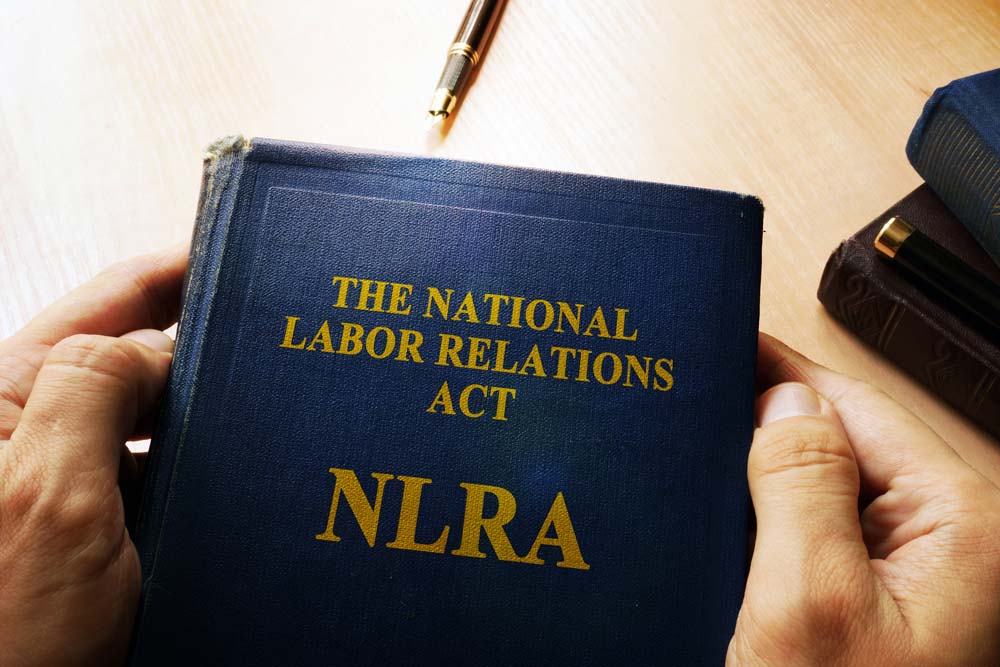Schedule a Consultation: 858.483.9200
Employee Handbooks: National Labor Relations Board New Guidance
A good corporate attorney helping and advising with respect to drafting and updating employee handbooks must be on the constant lookout for new and changing laws. Such might be found in new statutes, caselaw, and in new rulings from labor administrative agencies such as the National Labor Relations Board (“NLRB”). Rules and regulations from the NLRB may not apply to your San Diego business if you do not have enough employees, but various regulations can provide insight into legal trends. In general, the NLRB is tasked with regulating unionization. Thus, the NLRB takes a close look at policies and employee handbook rules that interfere with what is called “concerted activity to improve the terms and conditions of employment” — in other words, unionization efforts.
In December 2017, the NLRB issued a new set of guidelines in the matter captioned The Boeing Company and Society of Professional Engineering Employees In Aerospace, 365 NLRB 154 (December 14, 2017). In that proceeding, the specific employee policy at issue was a ban on cameras/devices-with-cameras in the workplace. This was challenged and, at the trial level, the no-camera policy was invalidated as it could be seen as the employer’s effort to prevent workers from engaging in concerted activity. On appeal, the NLRB reversed and established new standards for evaluating employee policies and handbooks. Here is a quick rundown.
San Diego Corporate Law: NLRB Guidance for Employee Handbooks
In the Boeing Company case, the NLRB promulgated a new test that involves three categories of policies/rules subject to increasing standards of scrutiny. See information sheet here.
- Category 1: least scrutiny — rules that are designed to foster “harmonious interactions and relationships” or to maintain basic standards of civility in the workplace; example: Boeing’s no-cameras rule
- Category 2: medium level of scrutiny — work rules that interfere with NLRA rights but that might be justified on a case-by-case basis where the legitimate justification outweighs the impact on NLRA rights; example: a policy requiring non-disparagement of employer
- Category 3: highest scrutiny — rules that prohibit or limit NLRA-protected conduct and any alleged justification does not outweigh the impact on NLRA rights; example: a ban on workers discussing wages or benefits with one another
As can be seen, the new NLRB rules require a balancing analysis. On the one side will be the quantity and quality of potential impact(s) on the rights of workers to engage in concerted activities. On the other side will be the legitimacy of a business’ potential justification(s) for the worker rules.
In Boeing Company, the employer was able to meet this balancing test. The restriction on the use camera-enabled devices — e.g., most cell phones — was justified on the basis of workplace security, protection of confidential business processes and information, and on the grounds of national security. As many know, Boeing has many government contracts, some of which are classified and Boeing has been the subject of targeted terrorist activity. The no-camera rule was justified for valid and substantial business reasons. By contrast, the no-camera rule did not restrict any protected worker activity.
Contact San Diego Corporate Law Today
For more information and/or for legal advice related to worker rules and employee handbooks, contact skilled and experienced corporate attorney Michael Leonard, Esq., of San Diego Corporate Law. Contact Mr. Leonard via email or call at (858) 483-9200.
You Might Also Like:
How Trusted Legal Counsel Can Help Your Business Grow
Legal Services Needed By San Diego Businesses
What Should Be In My Employee Handbook?






